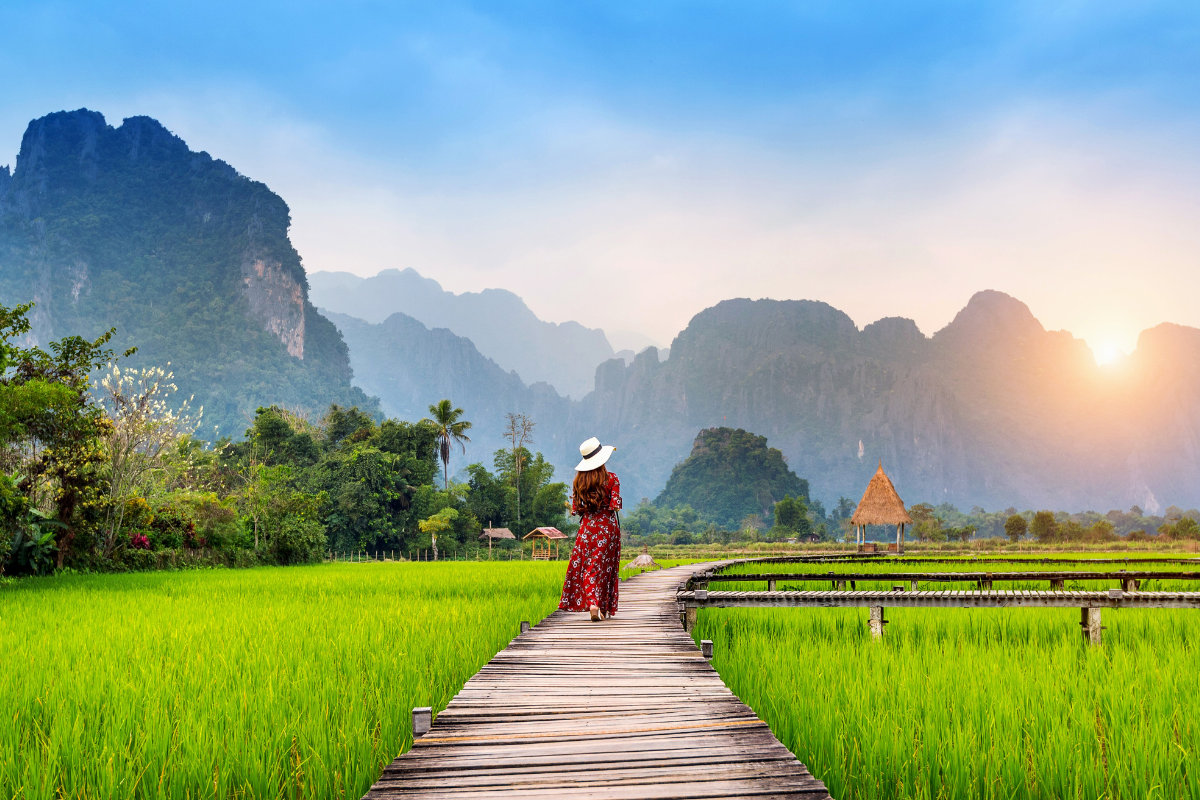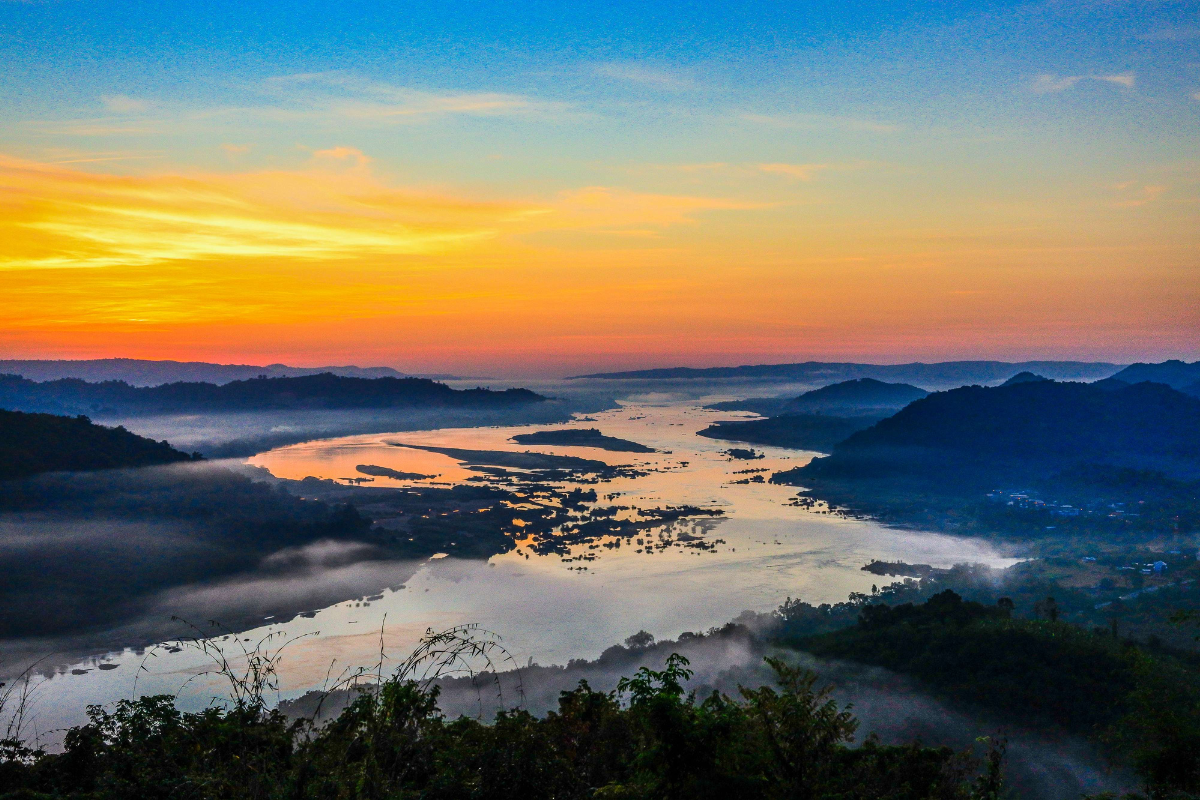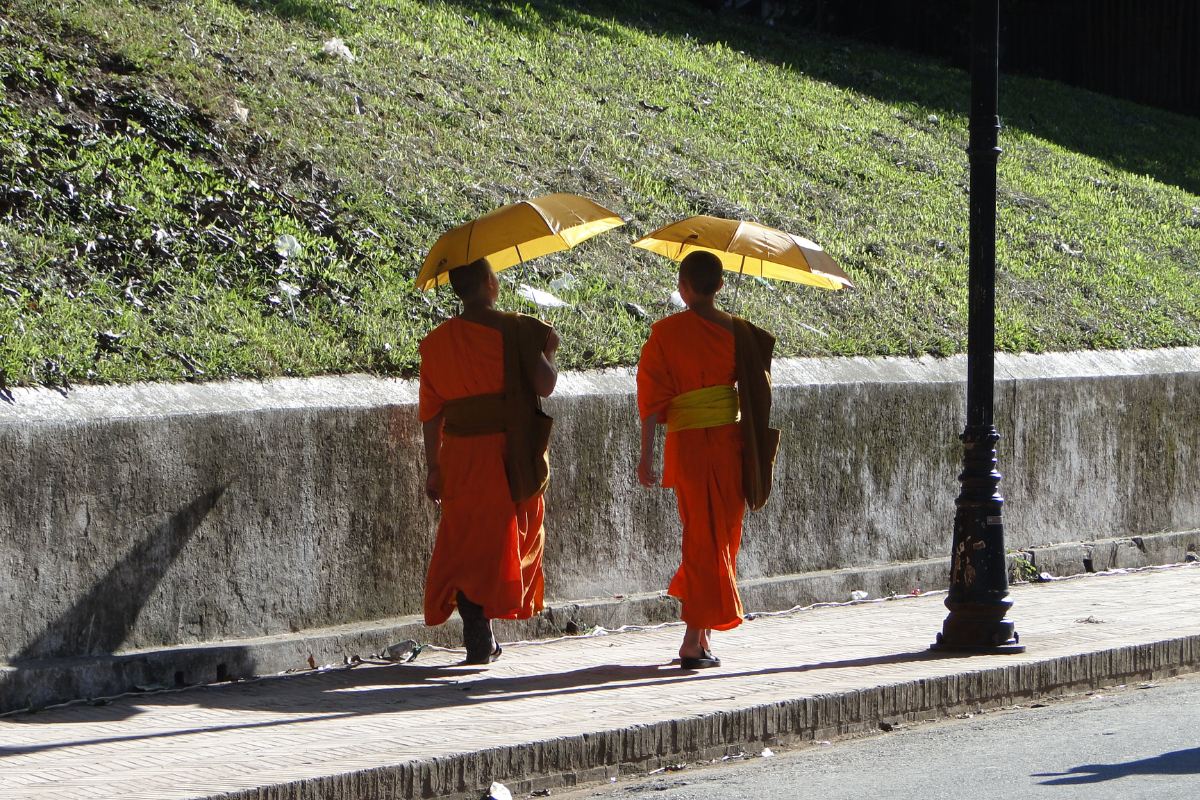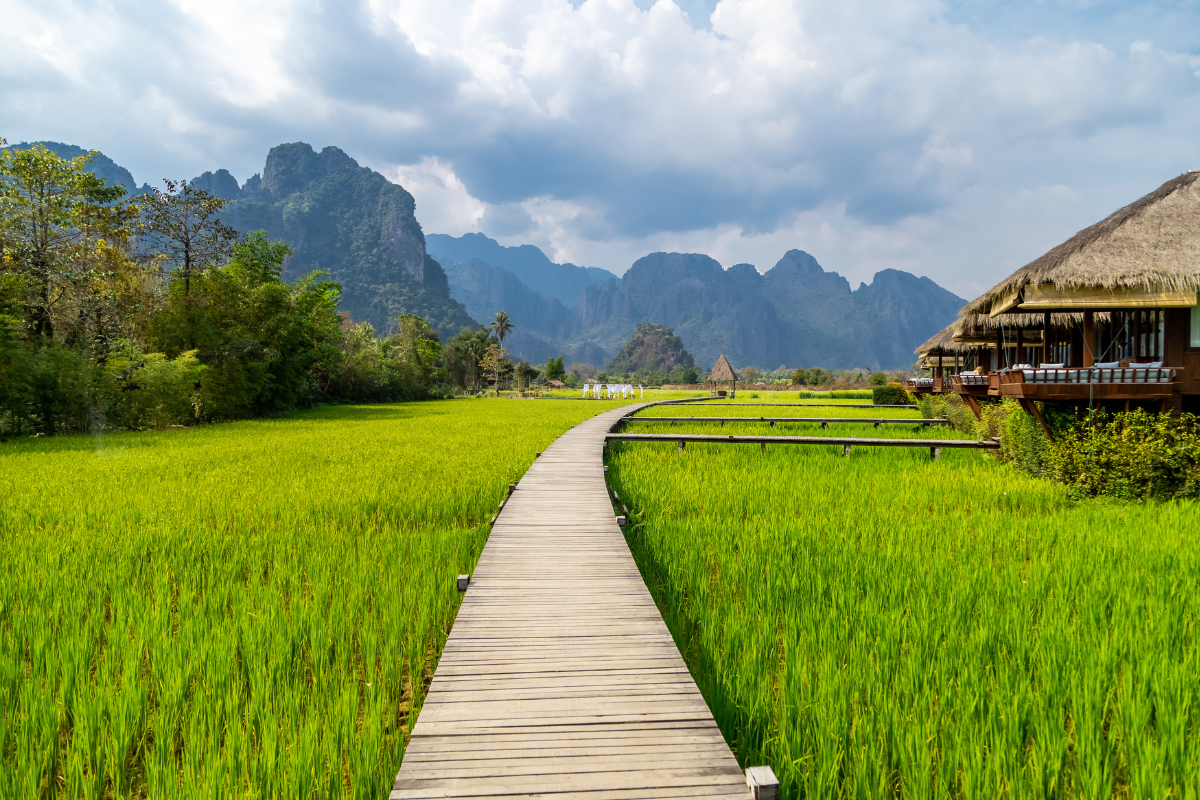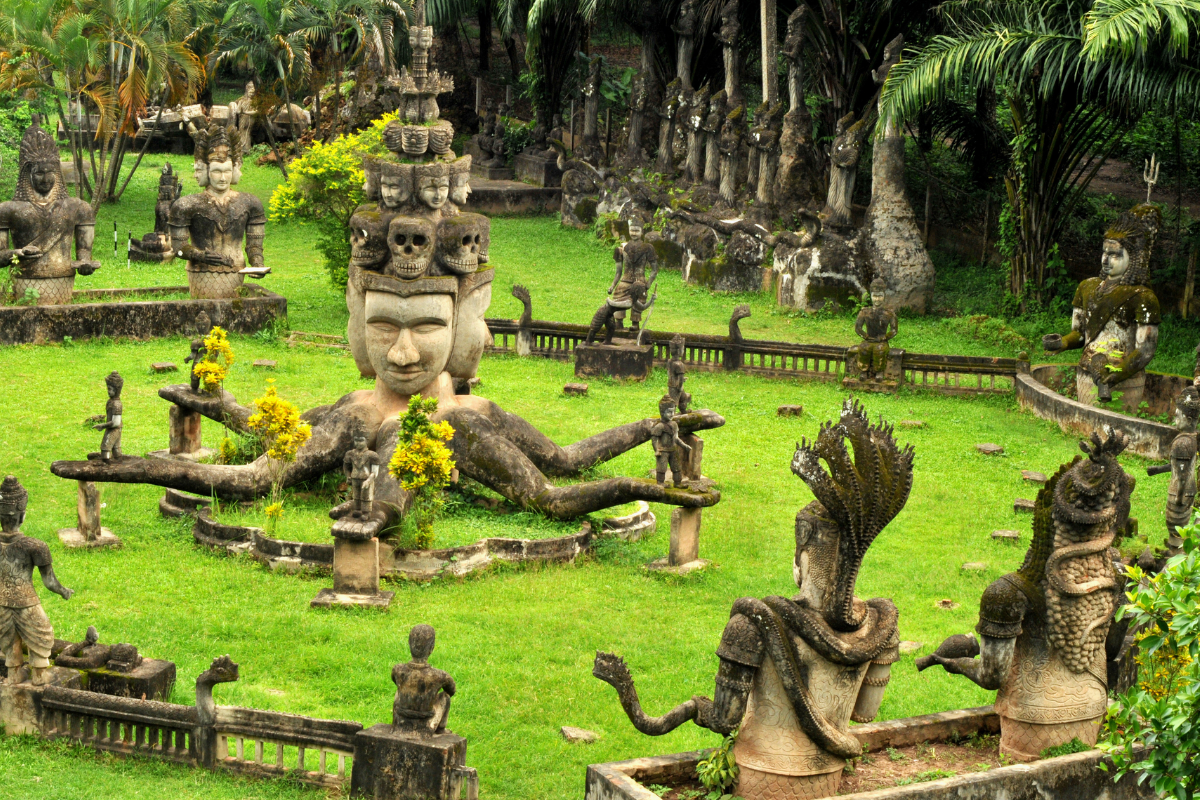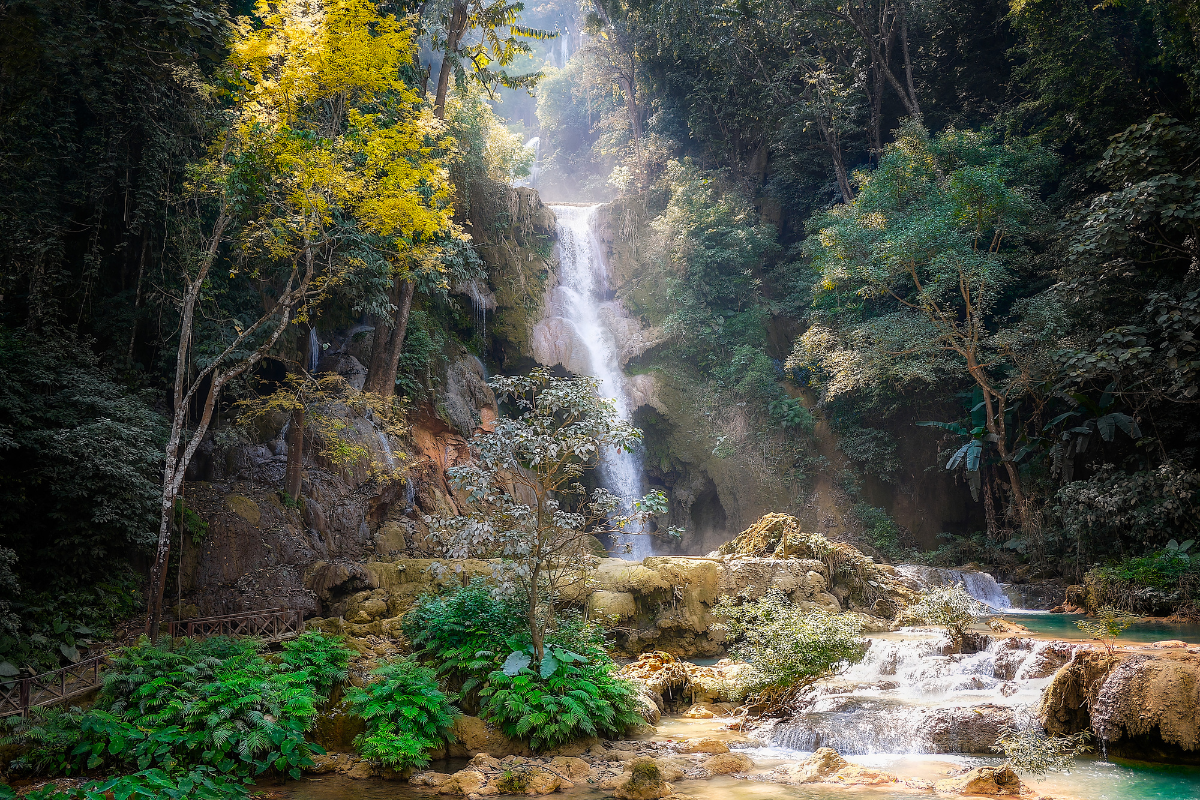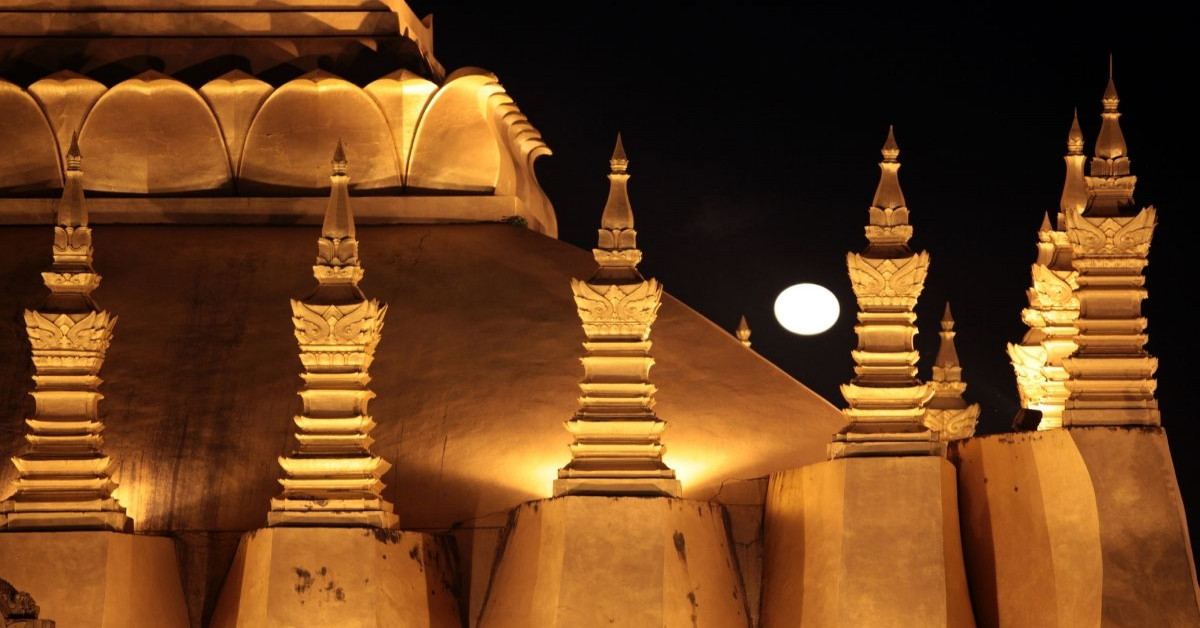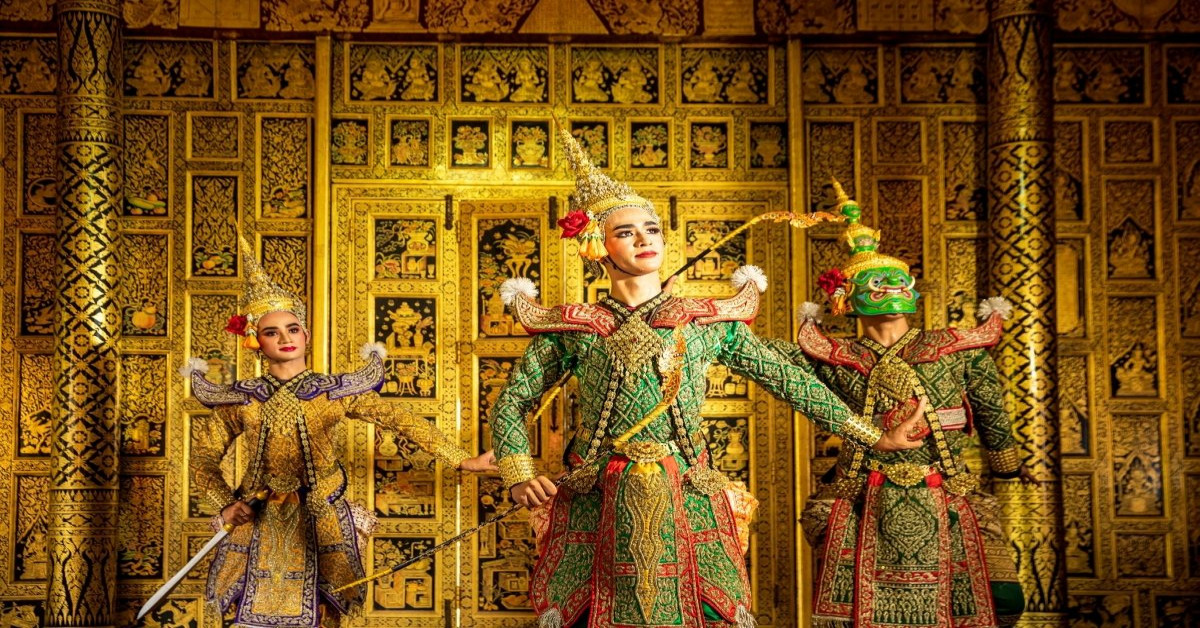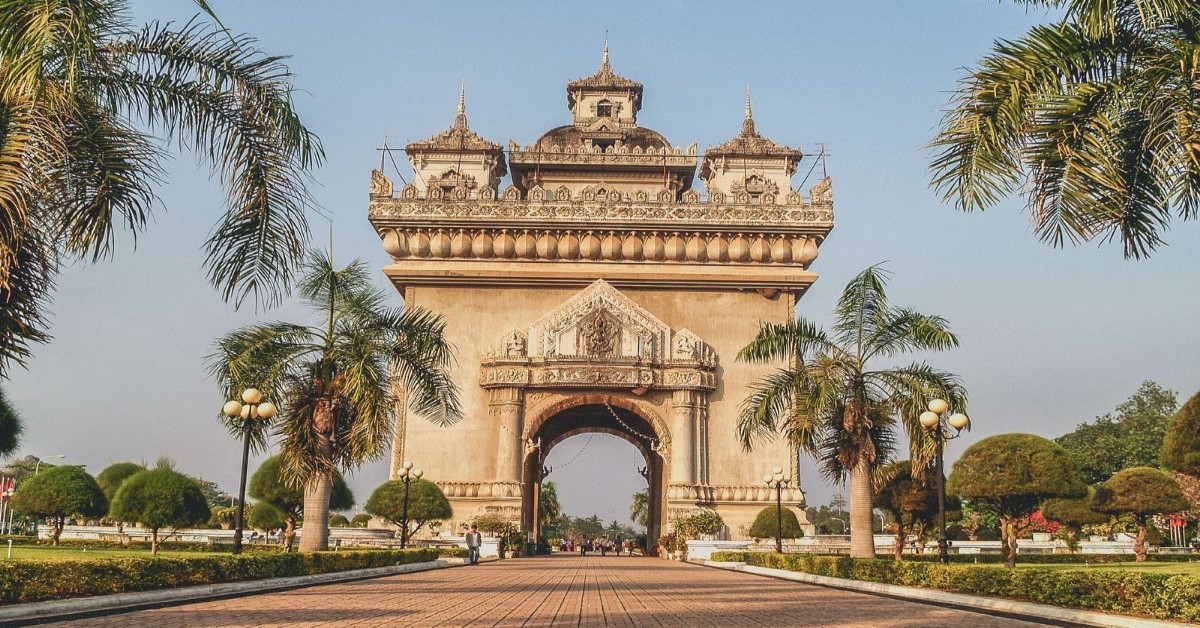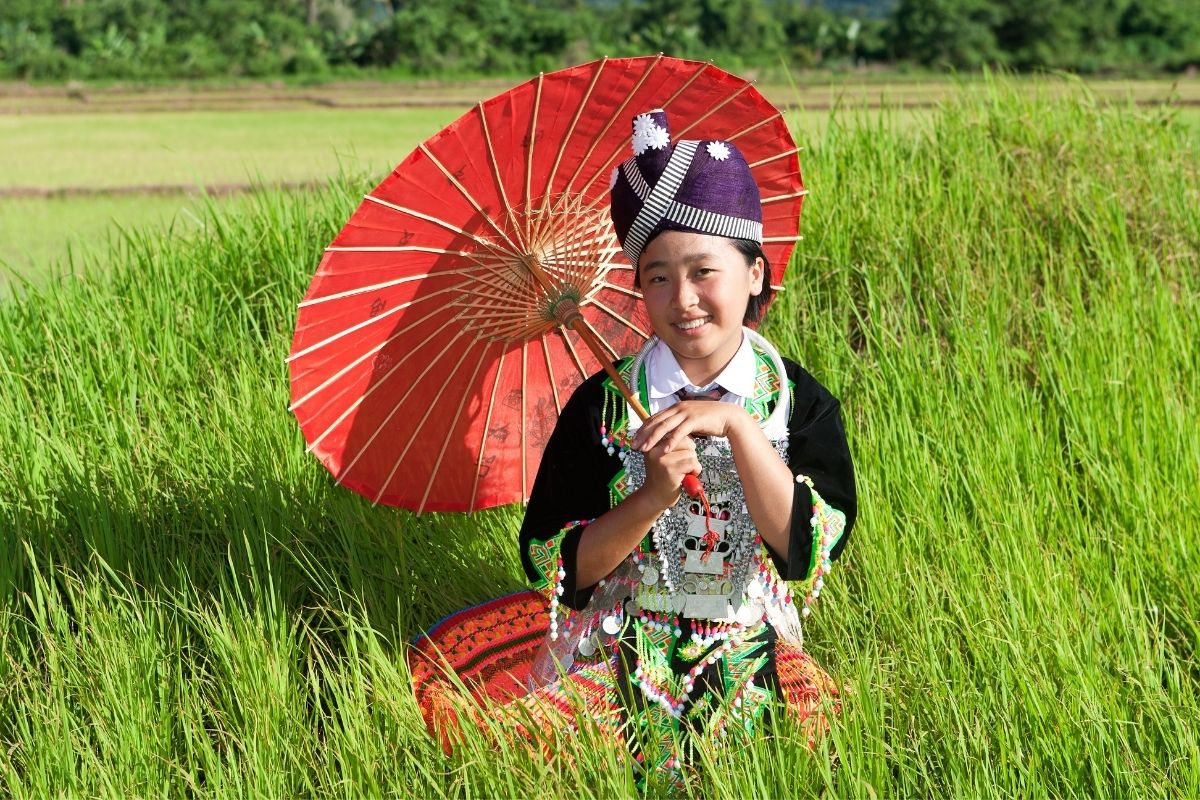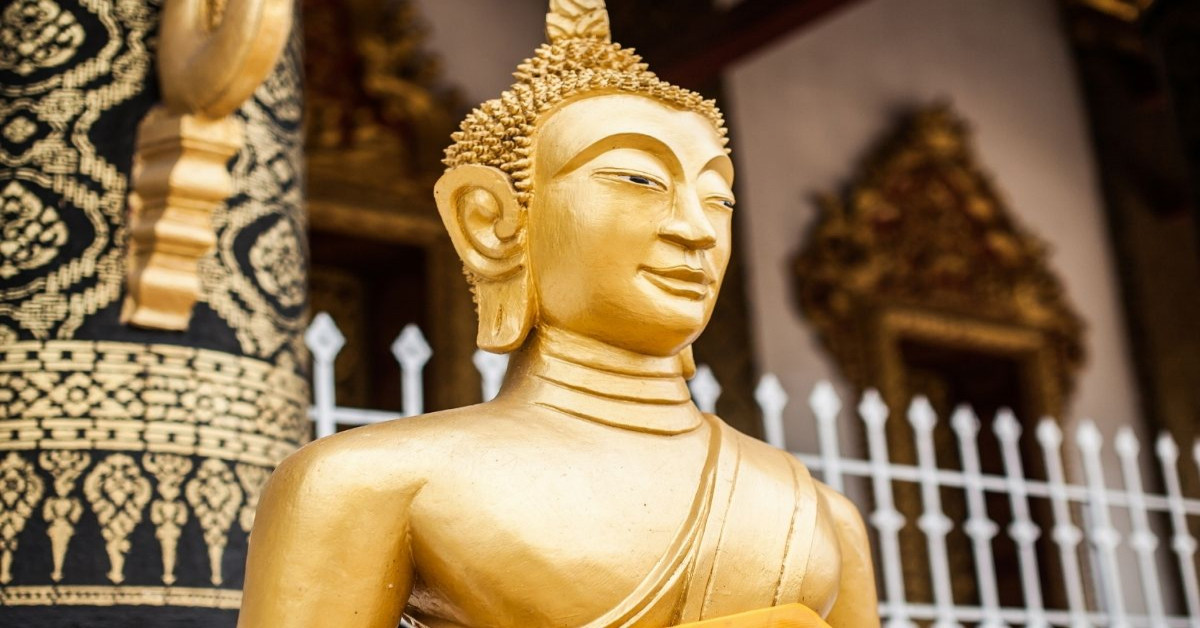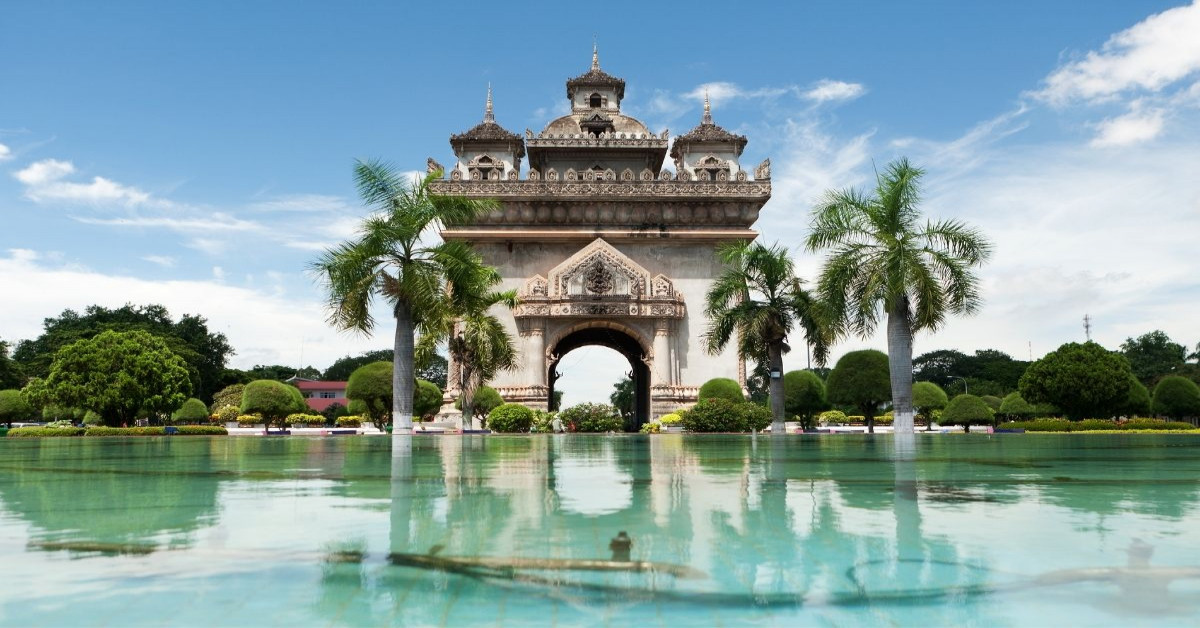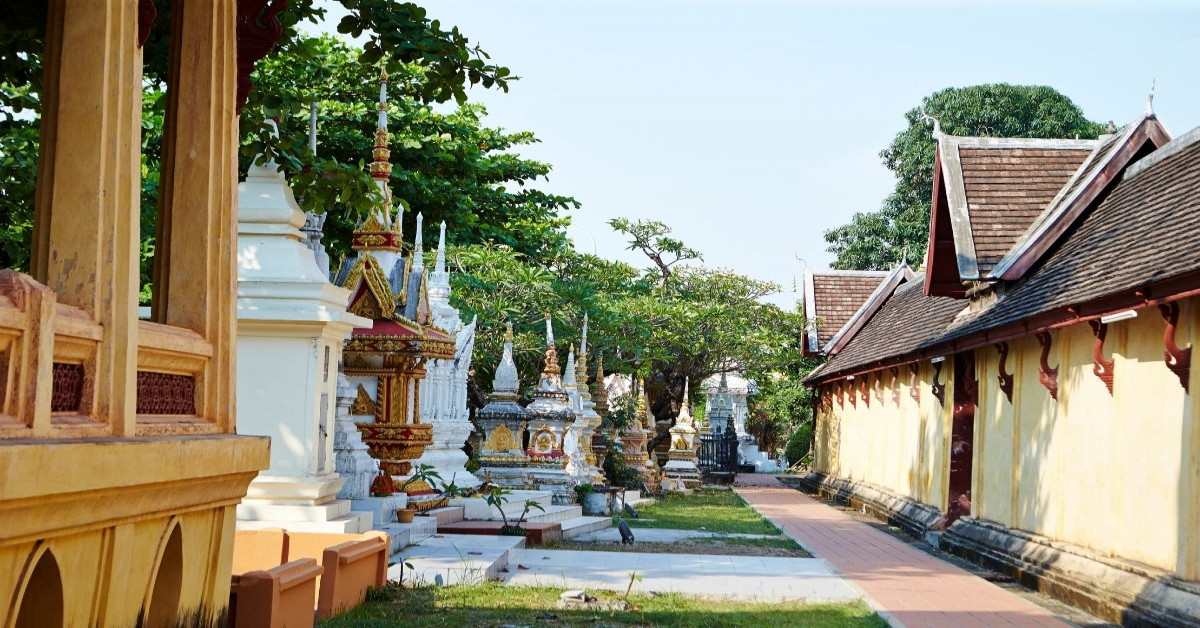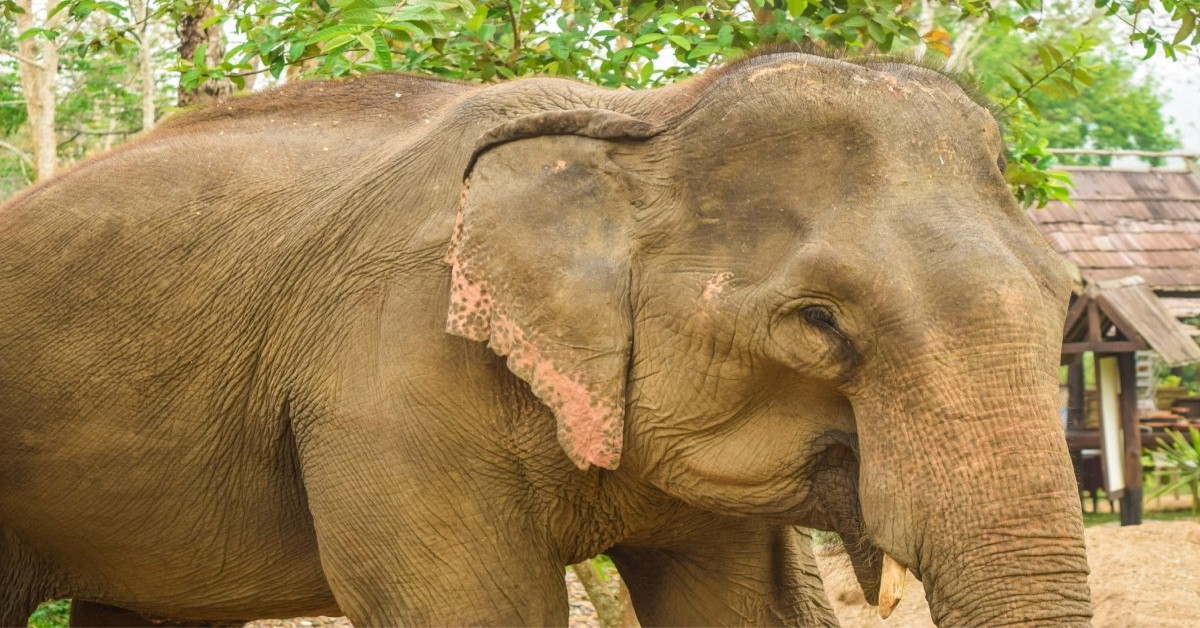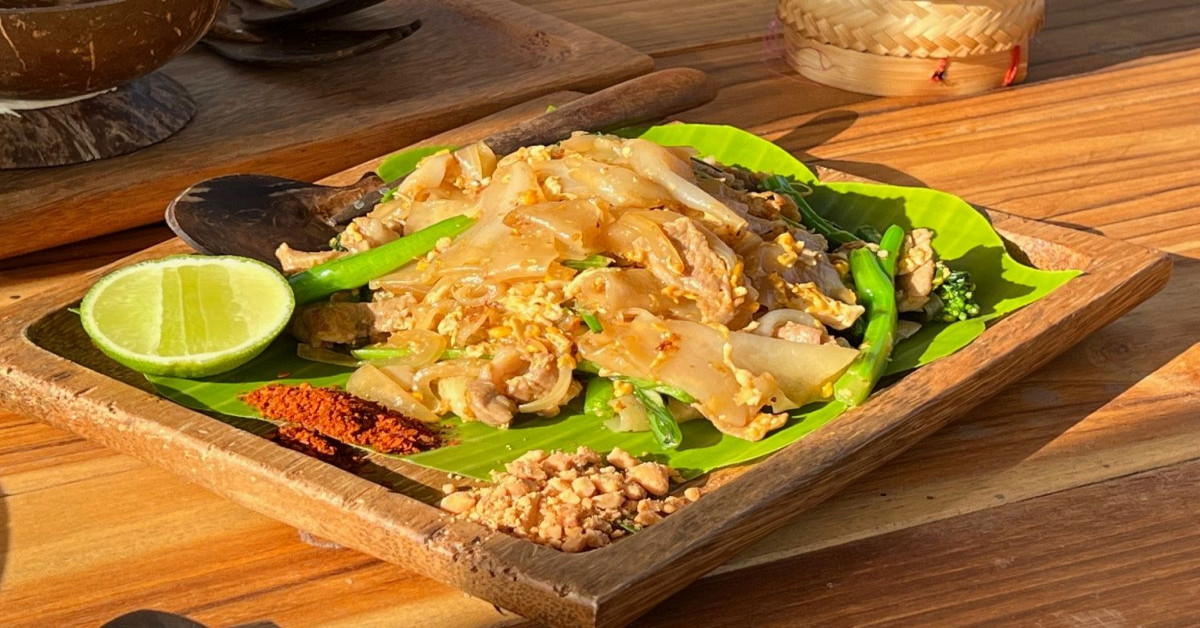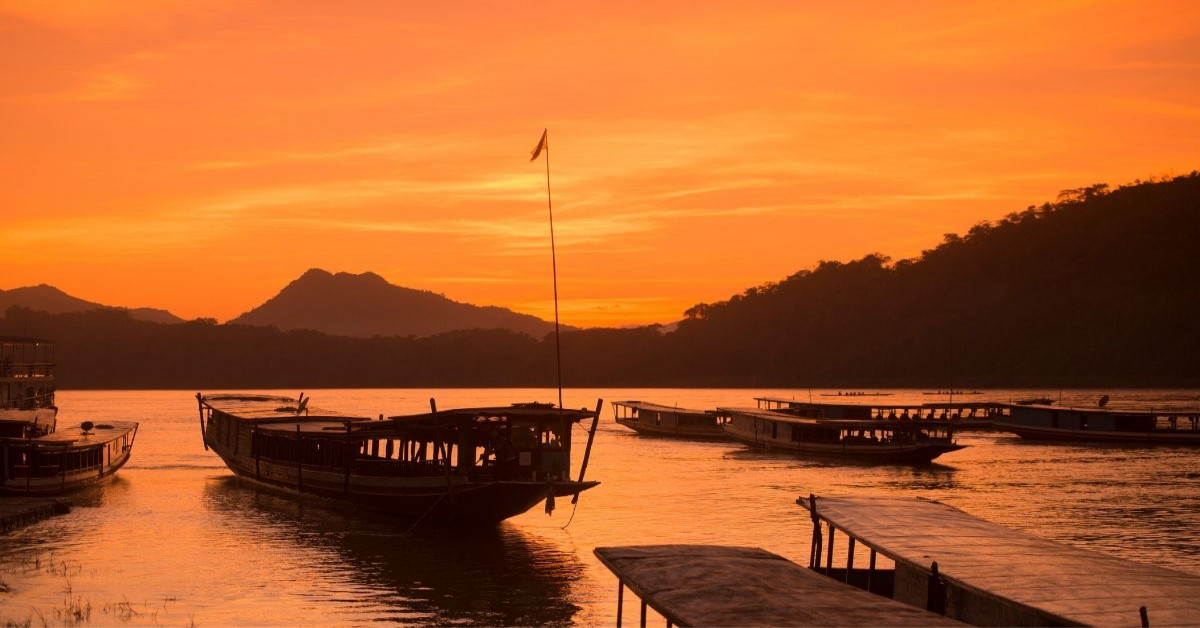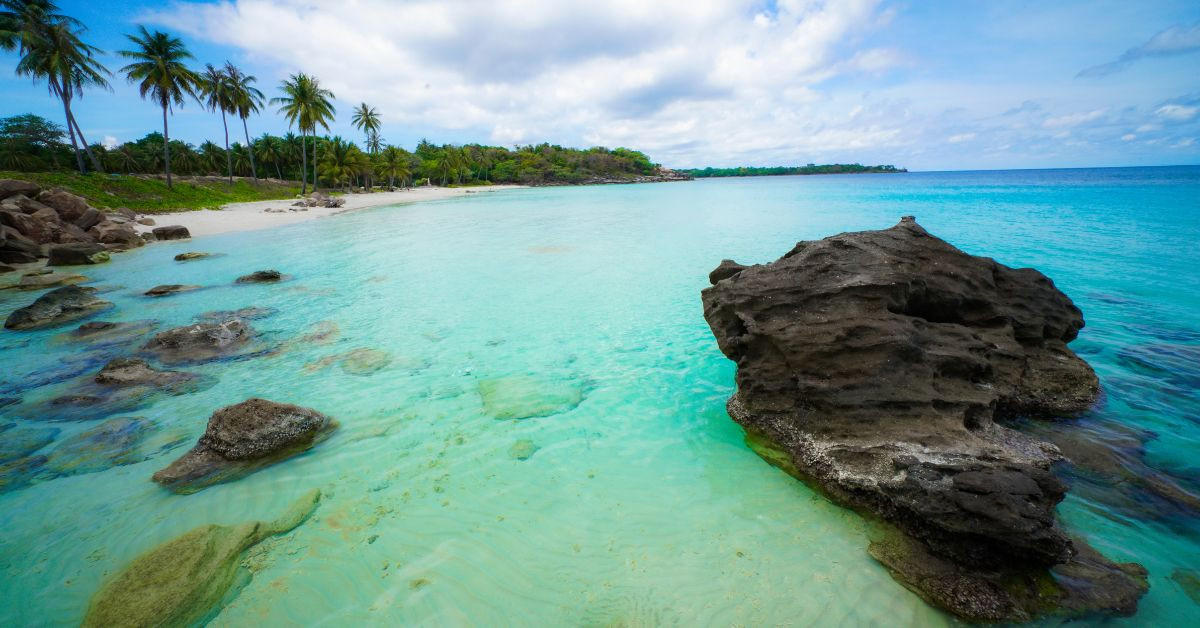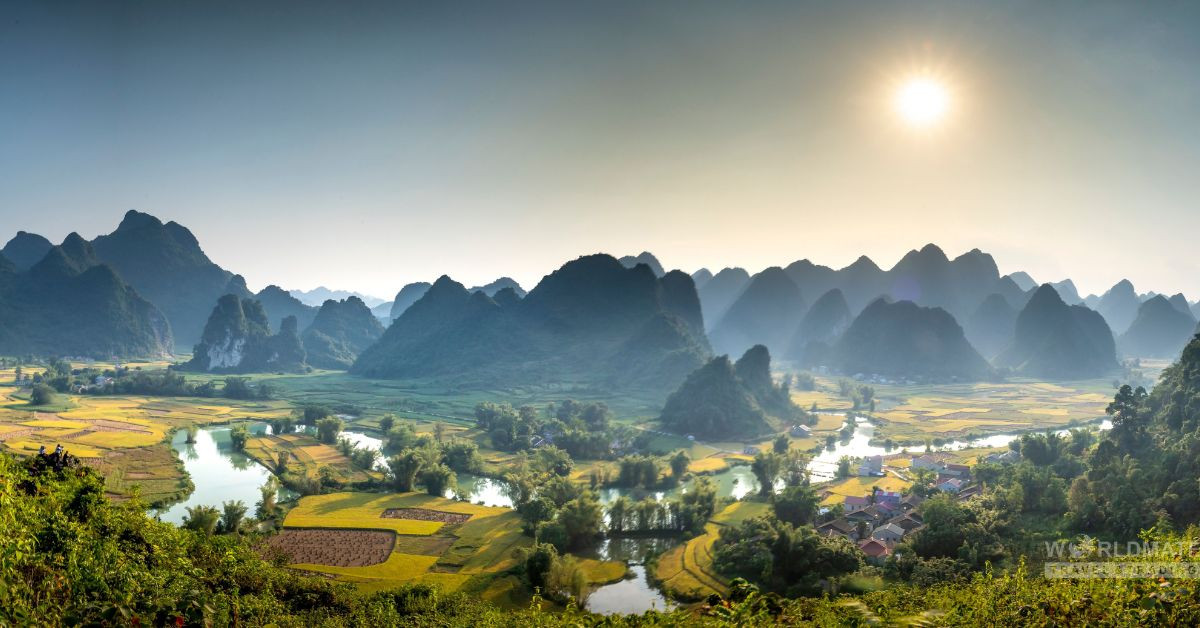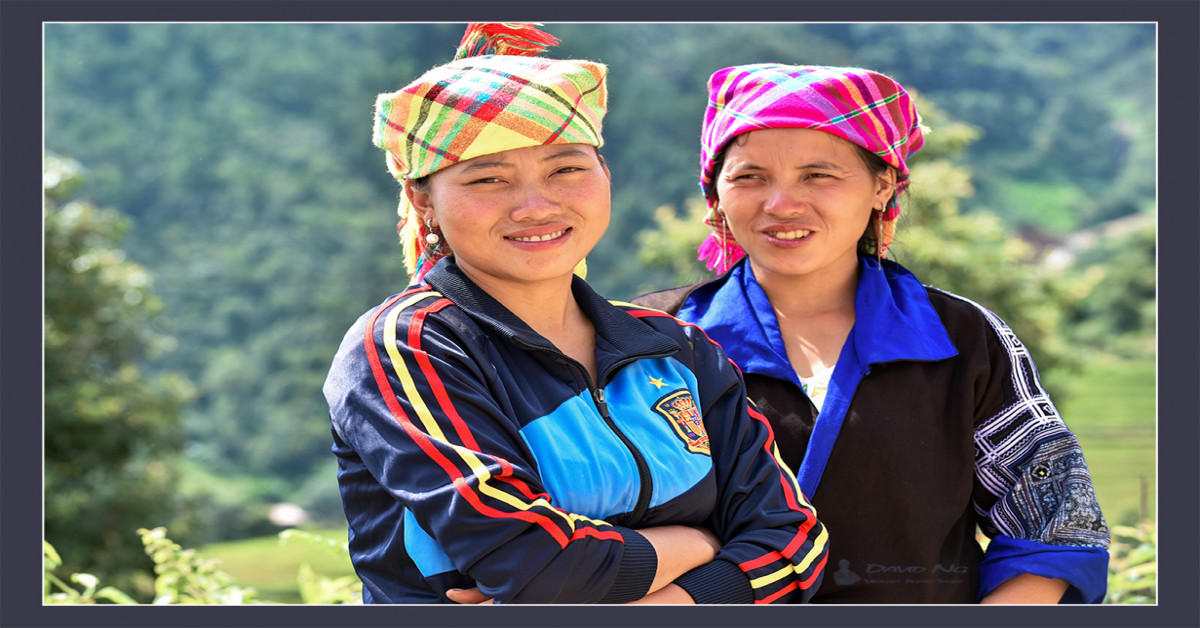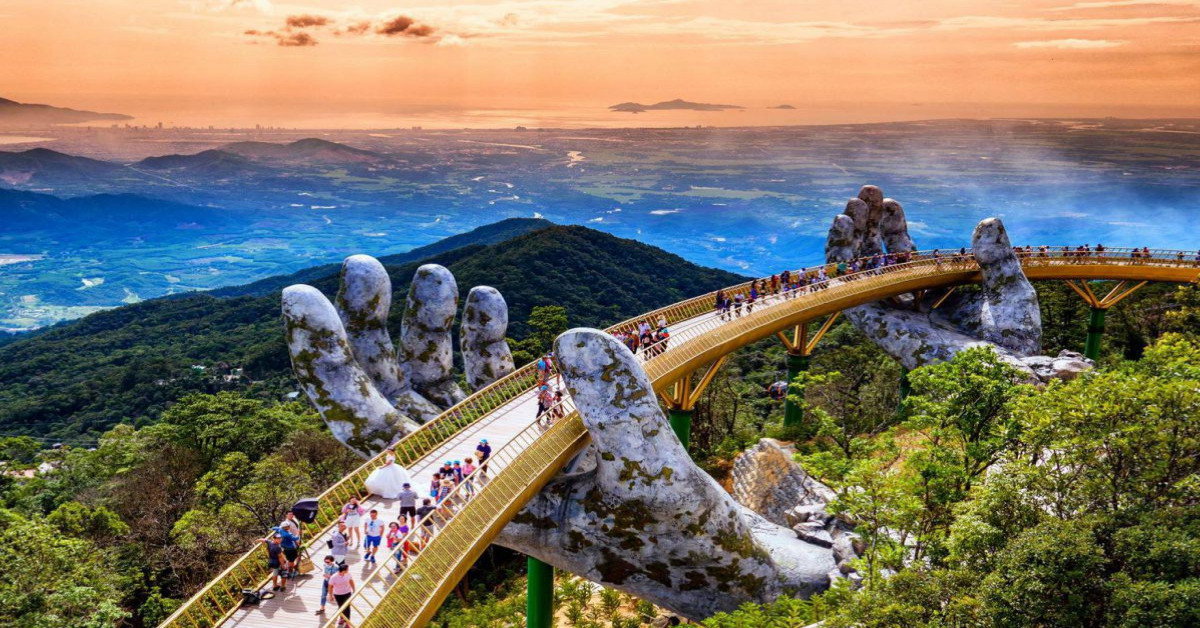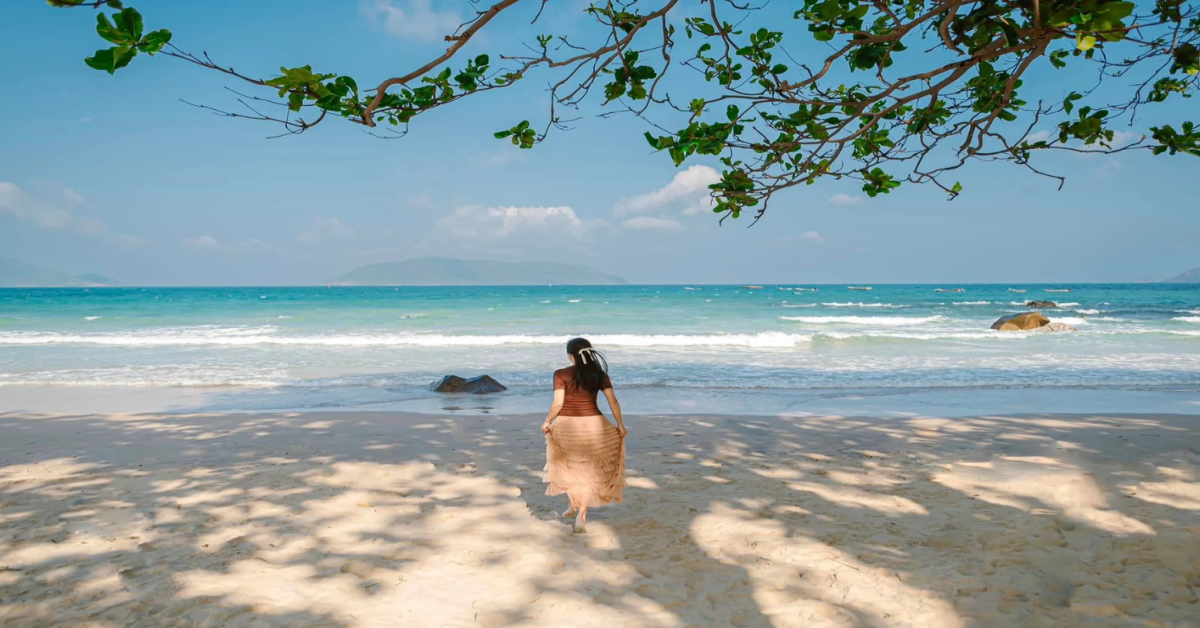All Must-See Tourist Attractions and Activities in Laos
The Southeast Asian country of Laos is a hidden gem among its more popular neighbors, Thailand, Cambodia, and Vietnam. Its rich cultural diversity stems from 49 ethnic groups that influence the food, arts, customs, and festivals.
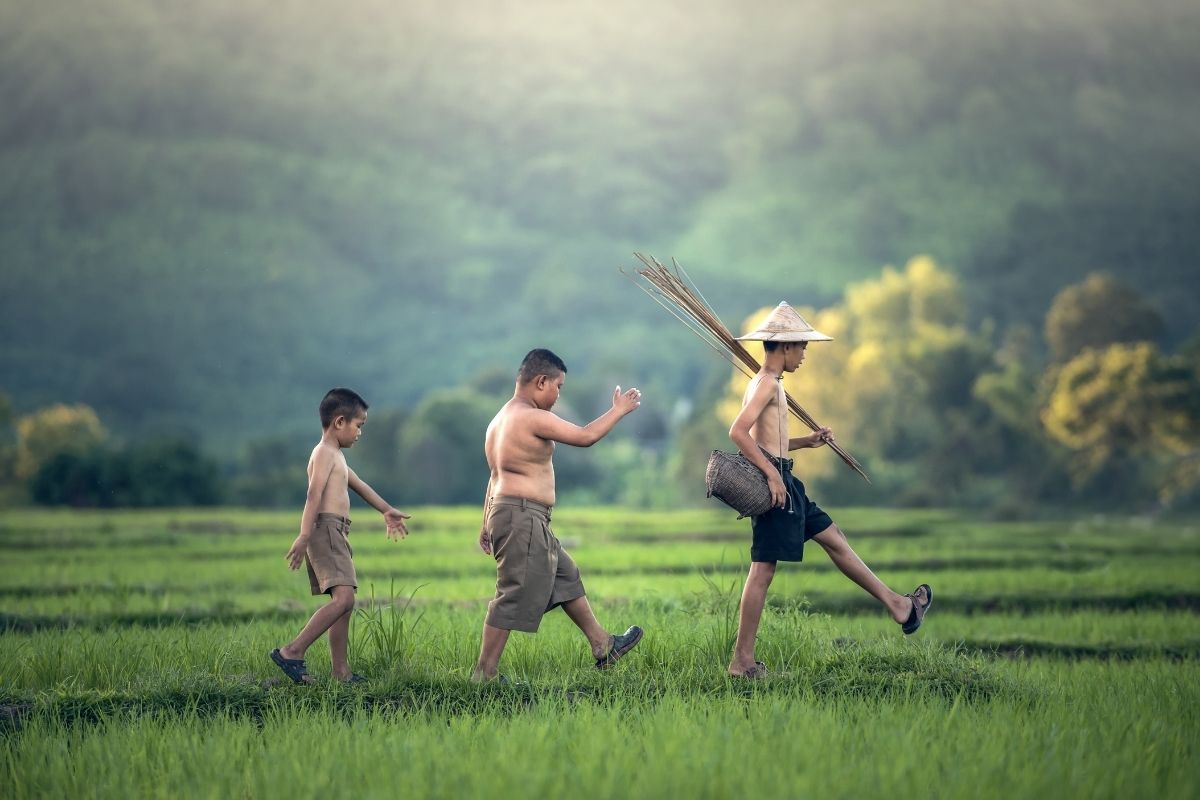
Laos is divided into northern, central, and southern regions, each with lush landscapes, an inviting atmosphere, and plenty of activities for travelers. The unspoiled jungle habitat means you might see an elephant strolling by or monks walking along the road.
The main tourist highlights in Laos include natural, cultural, and historical attractions, as well as several UNESCO World Heritage sites like the Wat Phou Complex and the ancient town of Luang Prabang. Some of the best experiences are spontaneous, such as tasting a ripe bean from a coffee plantation, breathing in the scent of green tea, or standing at the crescendo of Pha Pheng waterfall, the largest in Southeast Asia.
Plan your sightseeing in this enchanting country with our list of the top attractions and things to do in Laos.
1. Explore the Kuang Si Caves & Waterfalls
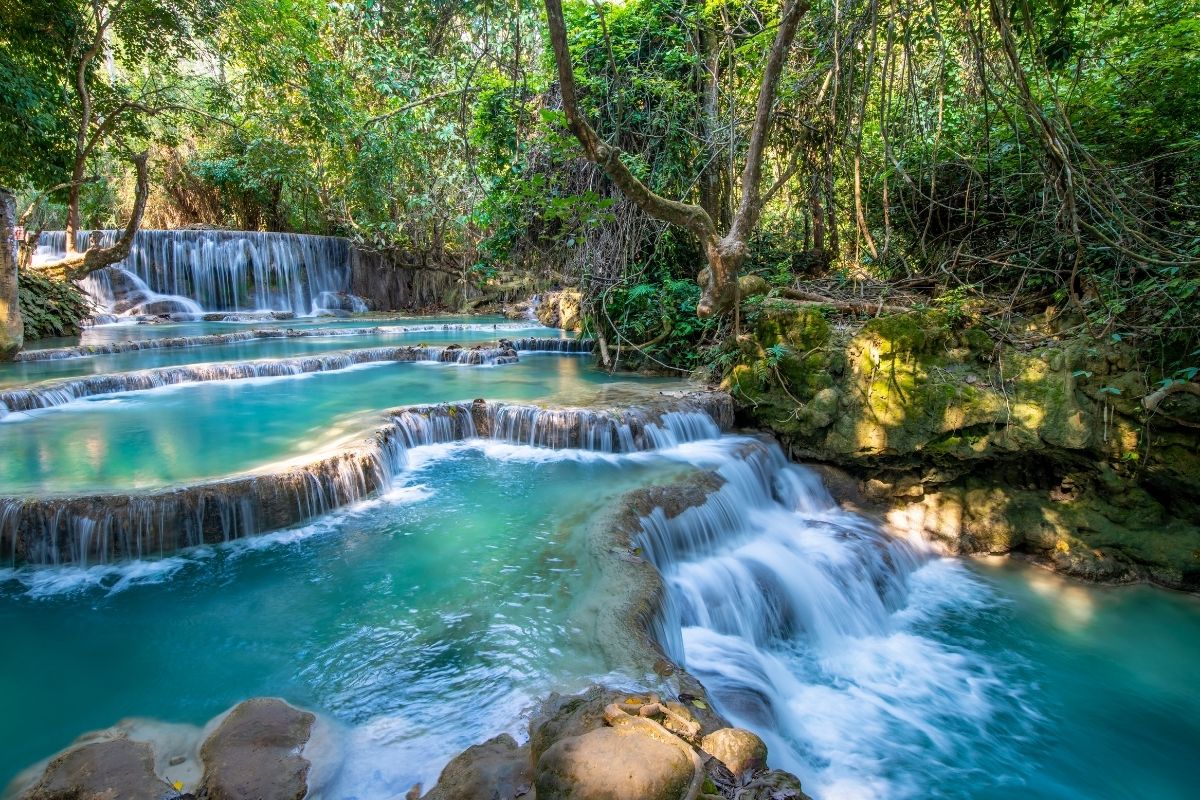
The Kuang Si waterfall in Luang Prabang is one of the most stunning waterfalls in Laos, cascading down three tiers to a 50-meter drop. Beneath the falls are a series of pools perfect for swimming and enjoying the view. Wooden huts on-site provide changing facilities.
Nearby, the Pak Ou natural caves overlook the Mekong River. Tham Ting and Tham Theung caves house thousands of Buddha statues gifted by locals over the centuries.
2. Take a Vientiane City Tour
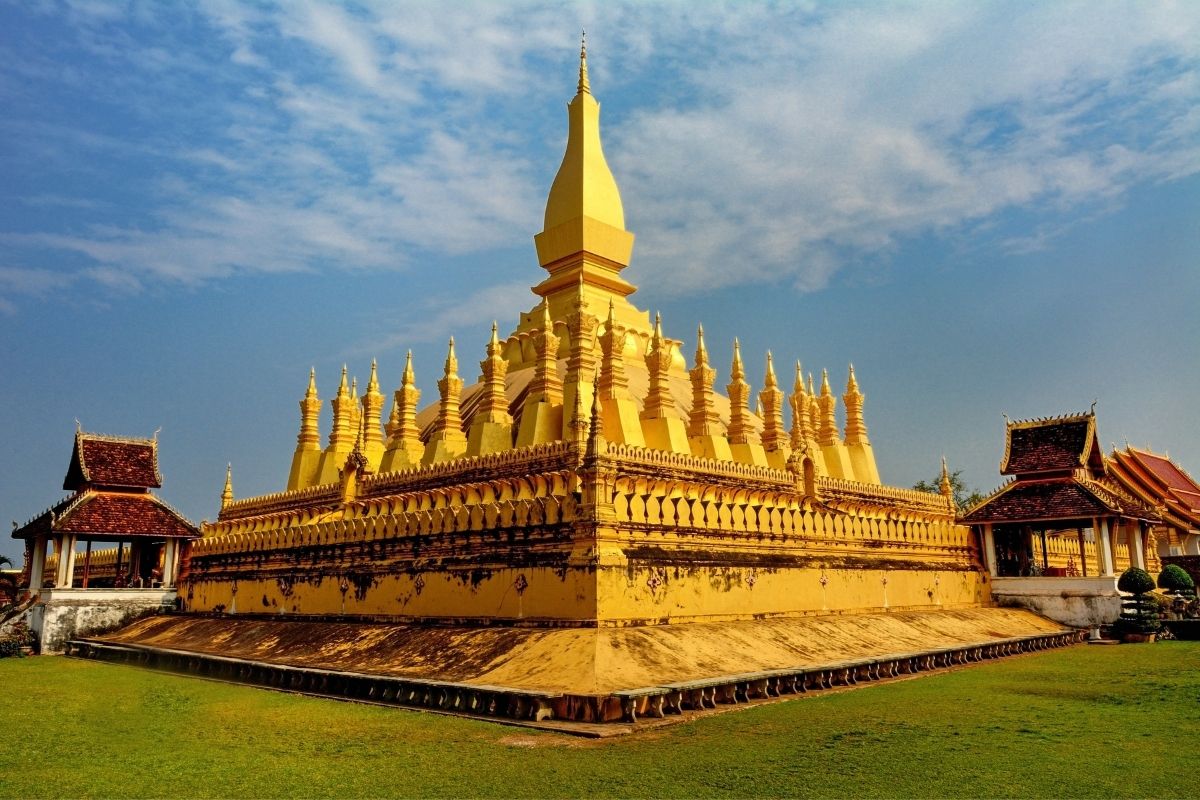
A tour of the capital city, Vientiane, is ideal for understanding the history and culture of Laos. A full-day private sightseeing tour covers key attractions like the Patuxay Monument, Wat Si Saket, Wat Phra Keo, and Buddha Park.
If time permits, visit the COPE Visitor Center on Boulevard Khou Vieng to learn about disability services and prosthetic limbs for those affected by unexploded military devices. Don’t miss the Vientiane night market for a fun evening excursion.
3. Tour the Sinouk Coffee Plantation
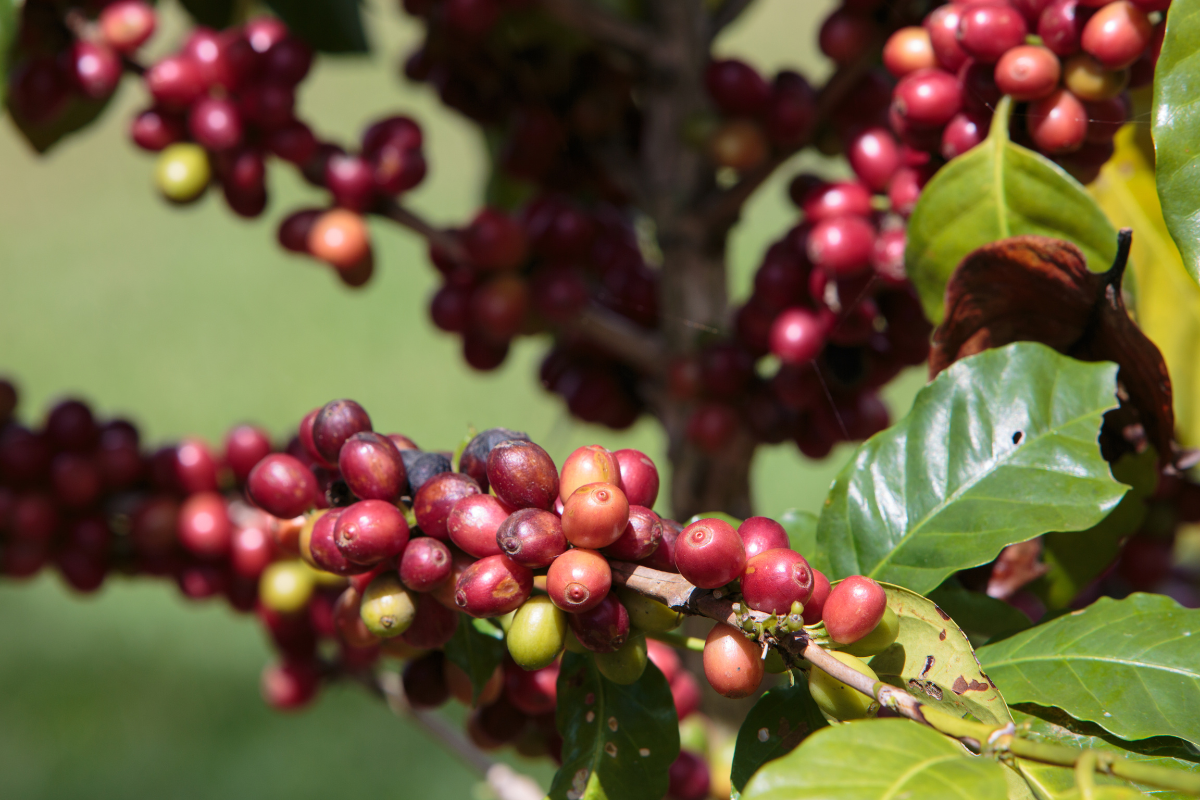
Sinouk Coffee is a prominent coffee supplier in Laos, offering some of the freshest coffee you’ll ever taste. A trip to the Sinouk Coffee plantation in southern Laos, along the Bolaven Plateau, is unforgettable.
Take a tour to learn about planting and roasting as you stroll through the lush gardens. The plantation still dries beans the old-fashioned way, on large tarps in the sun, and has organic certification.
Coffee enthusiasts can stay at the Sinouk Coffee Resort on-site and wake up to the aroma of freshly brewed Lao Arabica coffee. Enjoy a cup of coffee and a snack on the patio behind the small shop on the plantation.
Address: Thateng-Paksong Road, Bolaven Plateau, Champasak Town
4. Visit the Elephant Village Sanctuary
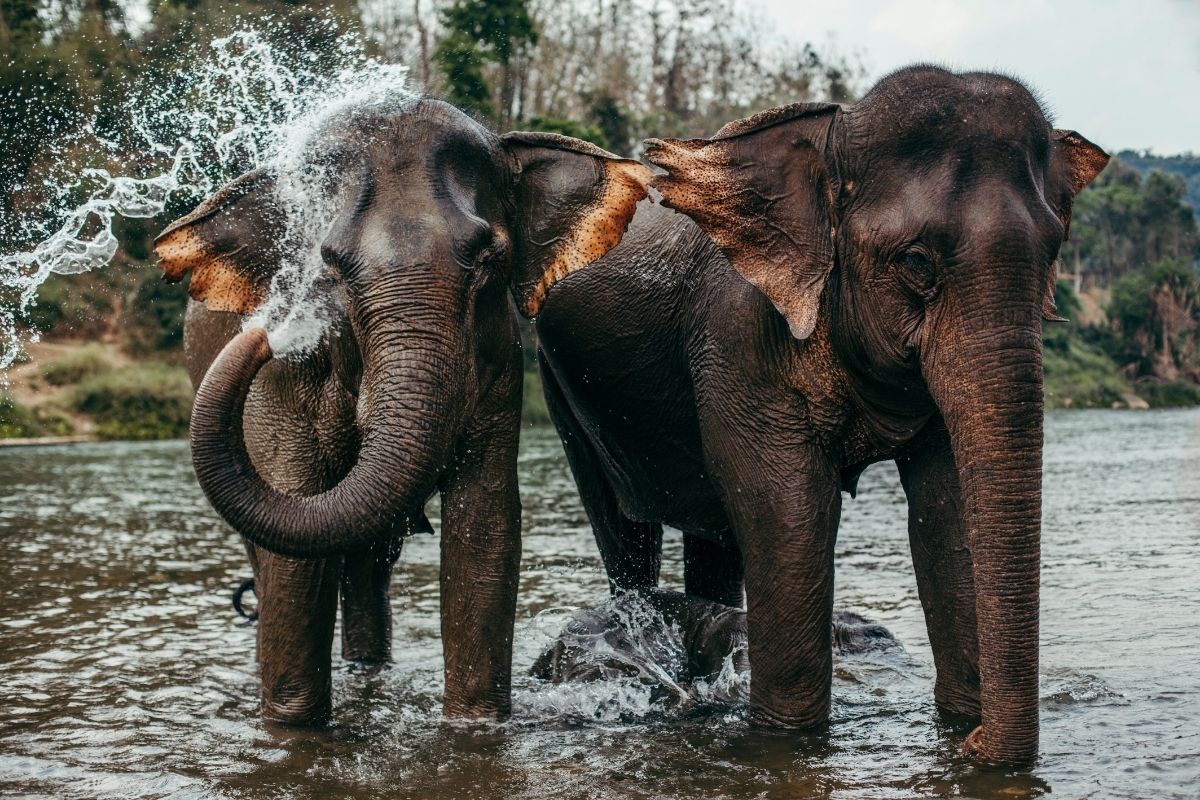
The Elephant Village Sanctuary in Luang Prabang is dedicated to the rehabilitation and protection of Asian elephants in Laos, providing employment to villagers. The sanctuary rescues and protects work elephants.
A day tour allows you to interact with these magnificent animals. Spend time with a mahout to learn about handling, feeding, and bathing the elephants while gaining first-hand experience with conservation efforts. This is one of the most comprehensive, hands-on experiences in Laos.
Address: Ban Xieng Lom, Luang Prabang
5. Boat through the 4000 Islands
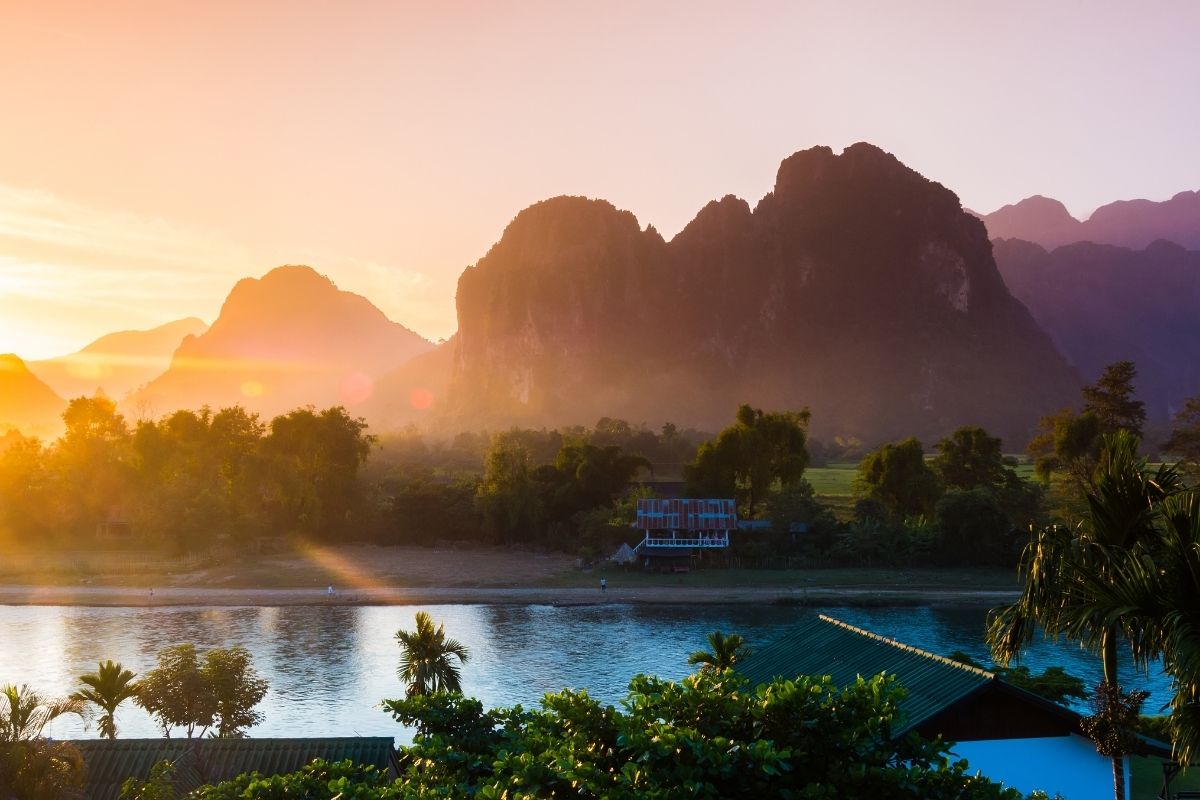
Explore the natural beauty of Laos among the 4000 Islands in the southern tip of the country. The main islands for tourists are Don Khong, Don Khon, and Don Det. These remote islands have limited internet service and no ATMs, so plan ahead.
Take a ferry to the islands and stay in local guesthouses. Enjoy views of the Mekong River and taste local cuisine from ingredients grown on centuries-old farms. Base yourself in Pakse, the southernmost main city, to plan your transportation to the islands.
6. Learn about Local Geology in the Kong Lor Caves
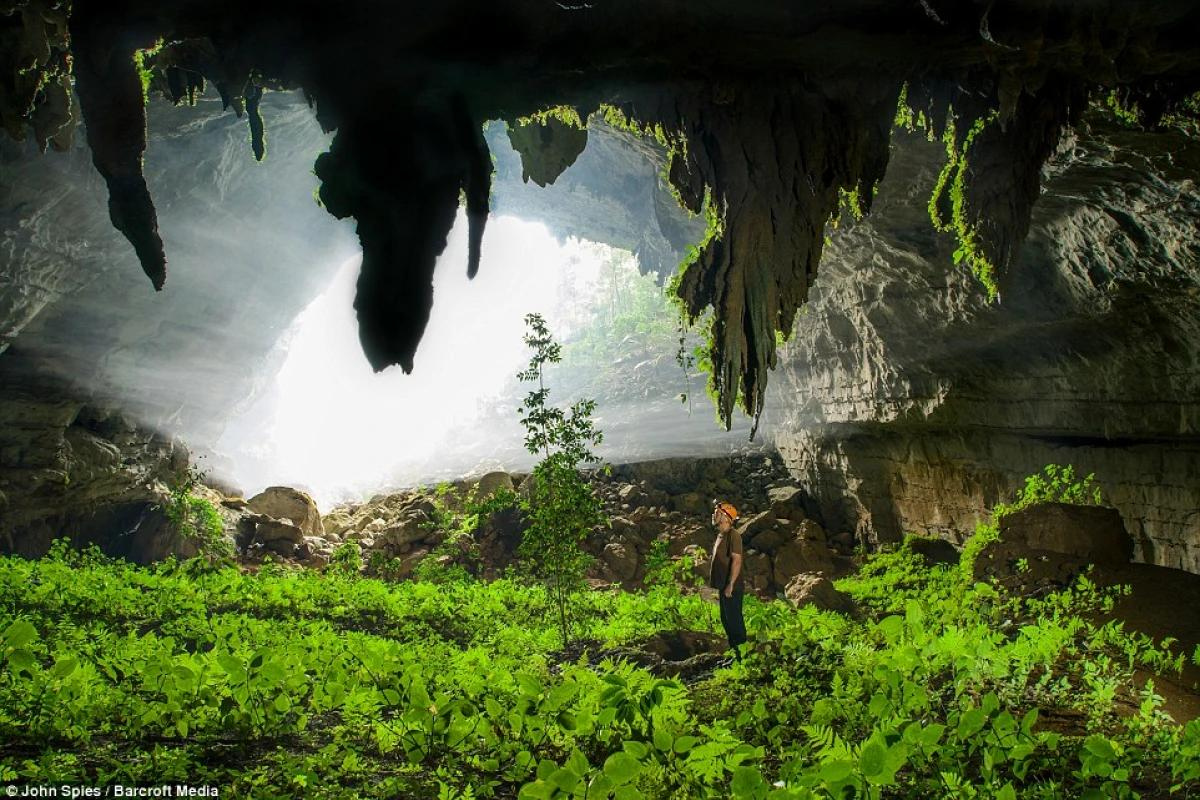
Located in the Phou Hin Boun National Protected Area in central Laos, the Kong Lor Caves stretch over 7.4 kilometers, making them one of the longest river cave systems in the world. Take a boat trip through the caves with a guide to see stunning geological formations.
The caves are dark, and you might get wet from dripping water. After exploring the caves, visit the tiny rural village of Kong Lor and enjoy other outdoor activities in the national park. Stay in Vientiane and hire a bus for the five-hour trip to the caves, planning an overnight stay.
7. Walk through Ancient Wat Phu
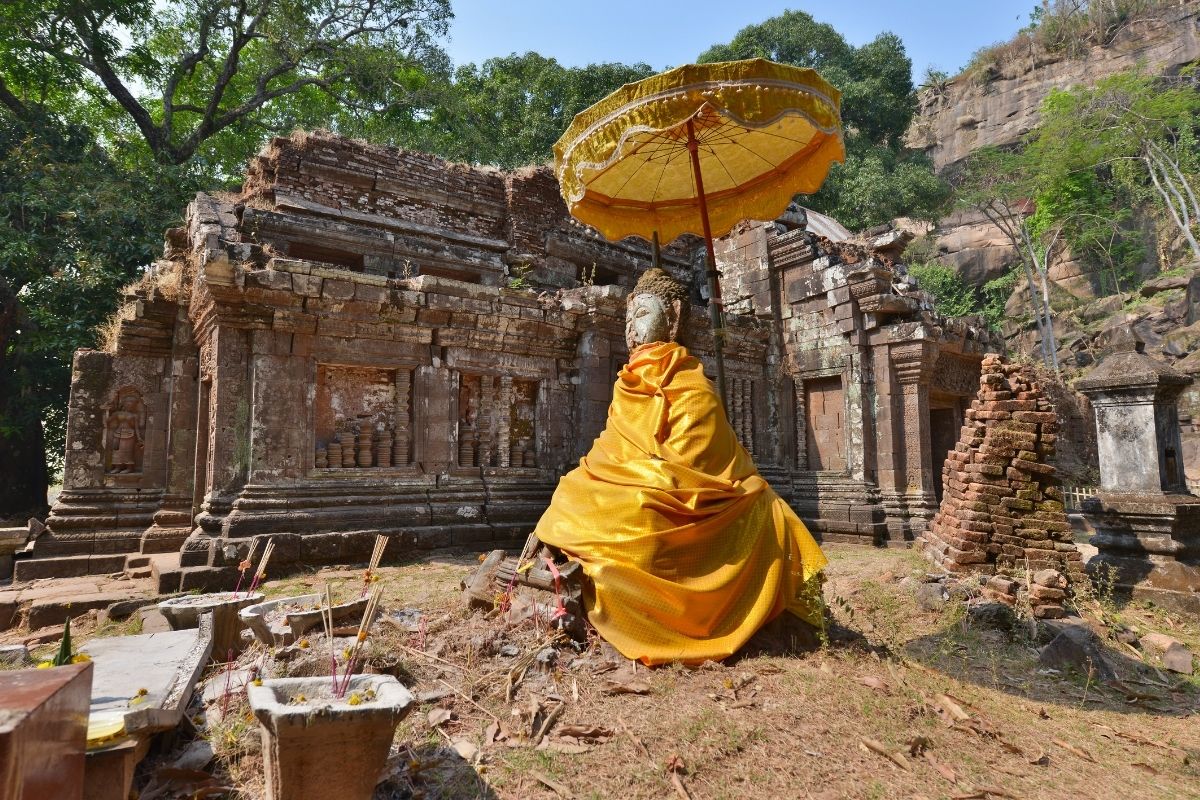
The UNESCO World Heritage site of Wat Phu is an archaeological marvel in southern Laos. This ancient temple, located at the base of the holy Phu Kao mountain, is one of the oldest worship sites in the country. Wat Phu is a Buddhist temple with relics of its Hindu history.
Beyond Wat Phu, explore paths on the mountain to find smaller, crumbling temples. The flowing Mekong River in the background adds to the ambiance.
8. See the Pha Pheng Waterfall
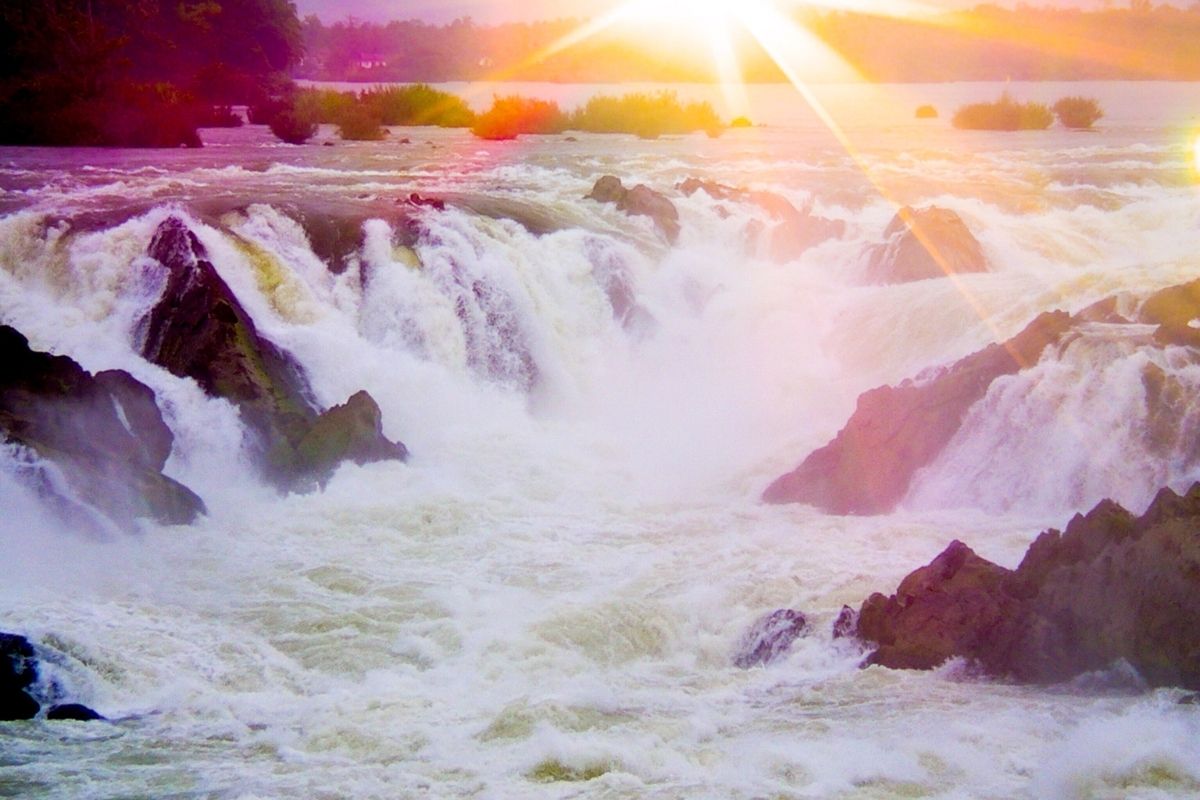
The Pha Pheng Waterfall, also known as Khone Falls, is the largest waterfall in Southeast Asia. The crescendo of water from dozens of points along the Mekong River is a breathtaking sensory experience.
Located in a small park in Champasak Province, walking paths allow you to observe the cascading waters from different viewpoints. While the park offers little else, the impressive waterfall will captivate you. You might even spot a local fisherman navigating the slower waters.
9. Work Like a Local at The Living Land Farm
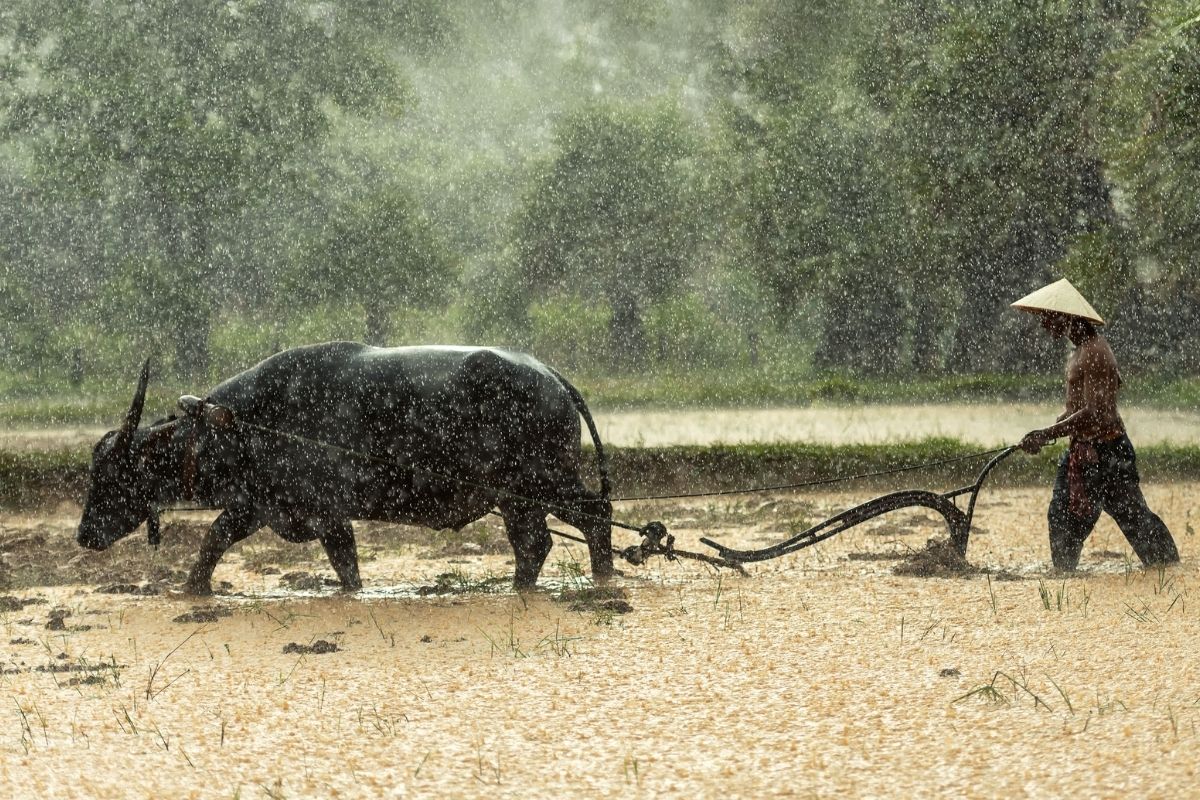
The Living Land Farm in Luang Prabang offers tourists the chance to work on an organic farm. Located in the countryside, you can don a conical hat and learn how to harvest rice, plough fields using livestock, and thresh in a real farm environment.
Be prepared for authentic and challenging manual labor. If you prefer not to get your hands dirty, you can observe the locals performing their daily chores.
The farm grows organic produce, offers a homestay, and has a restaurant in an old rice house serving traditional Lao cuisine.
Address: Kuangsi Waterfall Road, Ban Pongvang, Luang Prabang 0600
10. Hike the Trails through the Luang Prabang Temples
.jpg-image-dgwlkdsm.jpg)
Luang Prabang, a UNESCO World Heritage site, is renowned for its Buddhist temples. Exploring the 33 temples in the ancient town provides a deeper understanding of the Laotian people.
Tourist trails lead you to various temples, making it easy to explore at your own pace. You can also take guided tours of the most notable temples and Buddhist monasteries.
11. Enjoy the Panoramic Views from Nong Khiaw
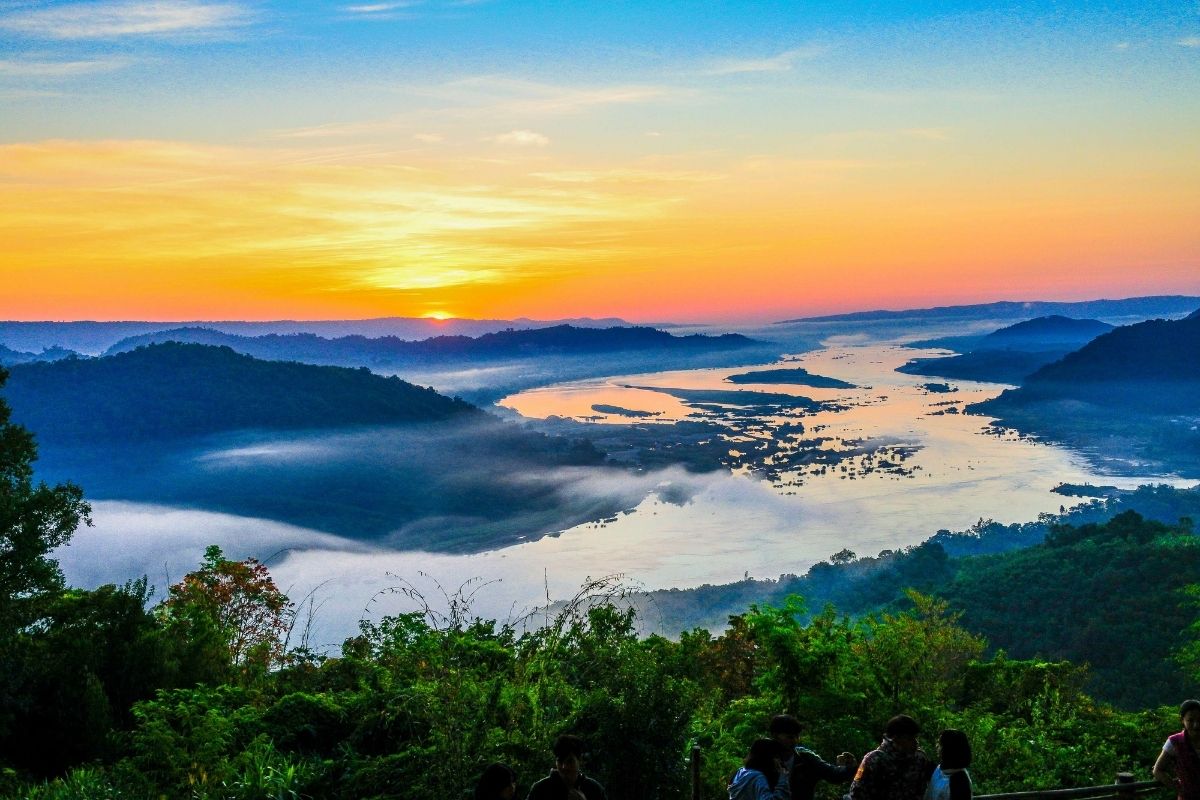
For stunning views of Laos’ natural landscape, hike to the Viewpoint at Nong Khiaw in the northern part of the country. The 1.5-hour trek from the village of Nong Khiaw offers a panoramic view of the Nam Ou River and surrounding villages.
Plan your hike wisely, as you’ll be trekking through the forest and will need a flashlight after sunset. Bring water and wear sturdy shoes. Alternatively, boat trips along the river offer beautiful views from below.
Address: Wat Ban Sop Houn 50, Nong Khiaw
12. Visit the Traditional Arts and Ethnology Centre

The Traditional Arts and Ethnology Centre in Luang Prabang is an educational experience for those interested in Laos’ ethnic minority groups.
The museum focuses on the four main ethnic minorities, showcasing traditional regalia, handmade crafts, and important artifacts. Guided tours are available, or you can explore on your own. The gift shop offers unique souvenirs, with 50% of purchases supporting local producers.
13. Buy Local Goods at the Vientiane Morning Market
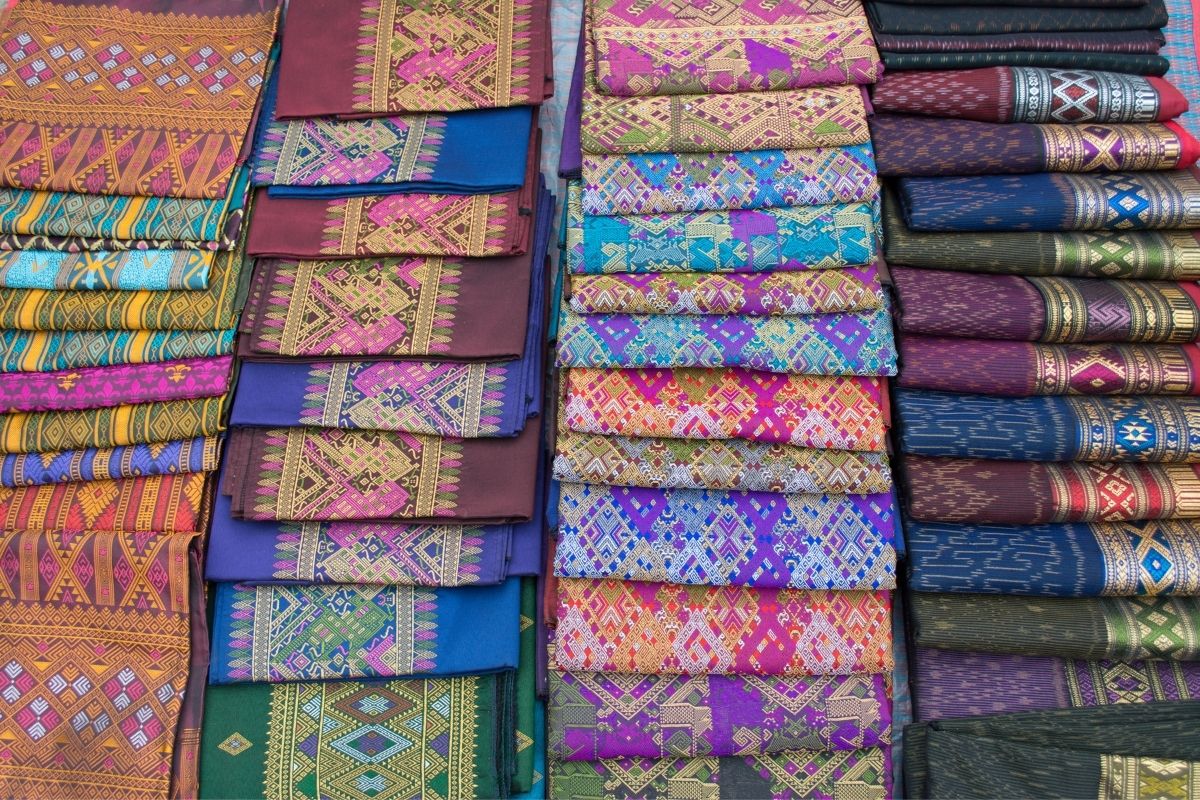
For Laos silk scarves, souvenirs, and the thrill of bargaining, visit the Vientiane Morning Market. This traditional open-air market offers everything from produce to religious statue replicas and silk dresses.
Even if you don’t buy anything, it’s worth visiting to experience the local scene and culture. If you find something you like, don’t hesitate to negotiate for a better price.
14. Tham Phu Kham Cave and Blue Lagoon
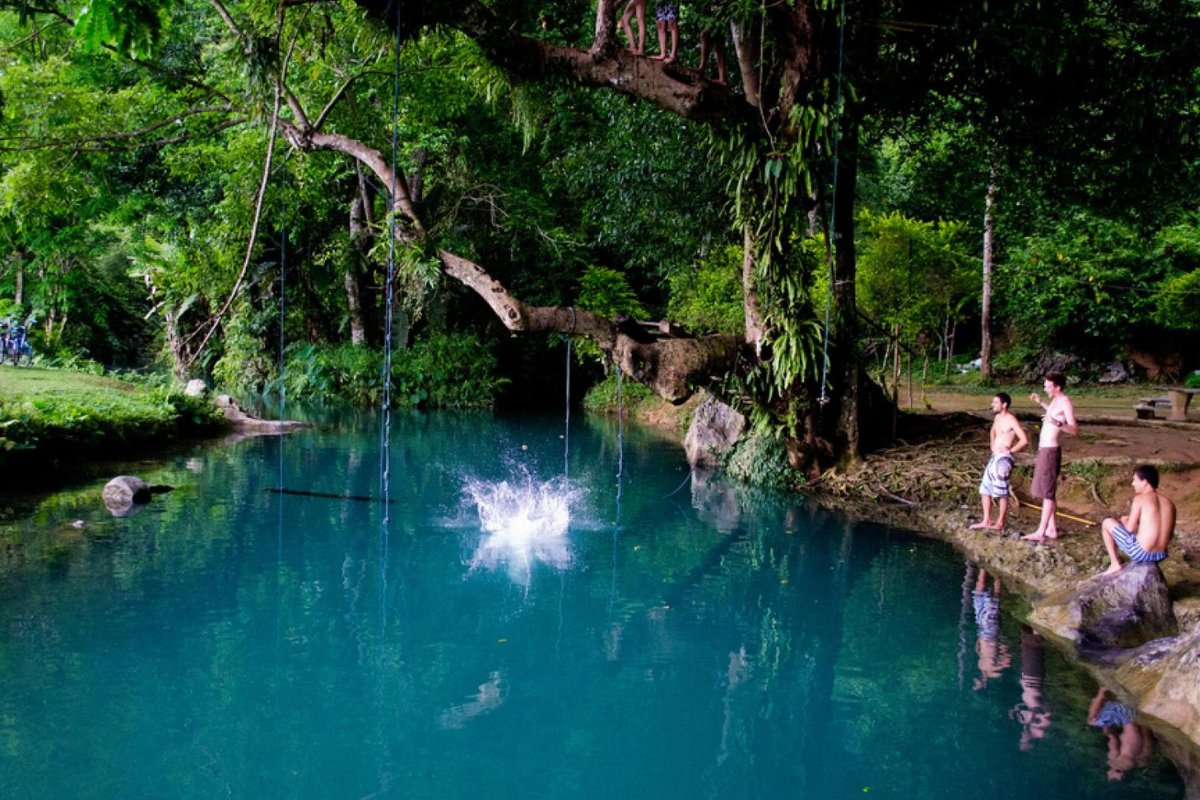
Experience a blend of natural beauty and cultural heritage at Tham Phu Kham Cave and Blue Lagoon near Vang Vieng. The lagoon’s water changes color from turquoise to emerald depending on the season, making it a popular swimming spot.
Hike the trail to Tham Phu Kham Cave to see hidden Buddha images inside. The climb to the cave entrance is steep but rewarding for those seeking cultural adventure. The first chamber reveals a bronze reclining Buddha lit by sunlight streaming through the cave openings, where locals come to worship.
If you plan to explore beyond the entrance, wear sturdy shoes and bring a flashlight to navigate the rocky, uneven ground in the dark cave.
15. Pha Tad Ke Botanical Garden
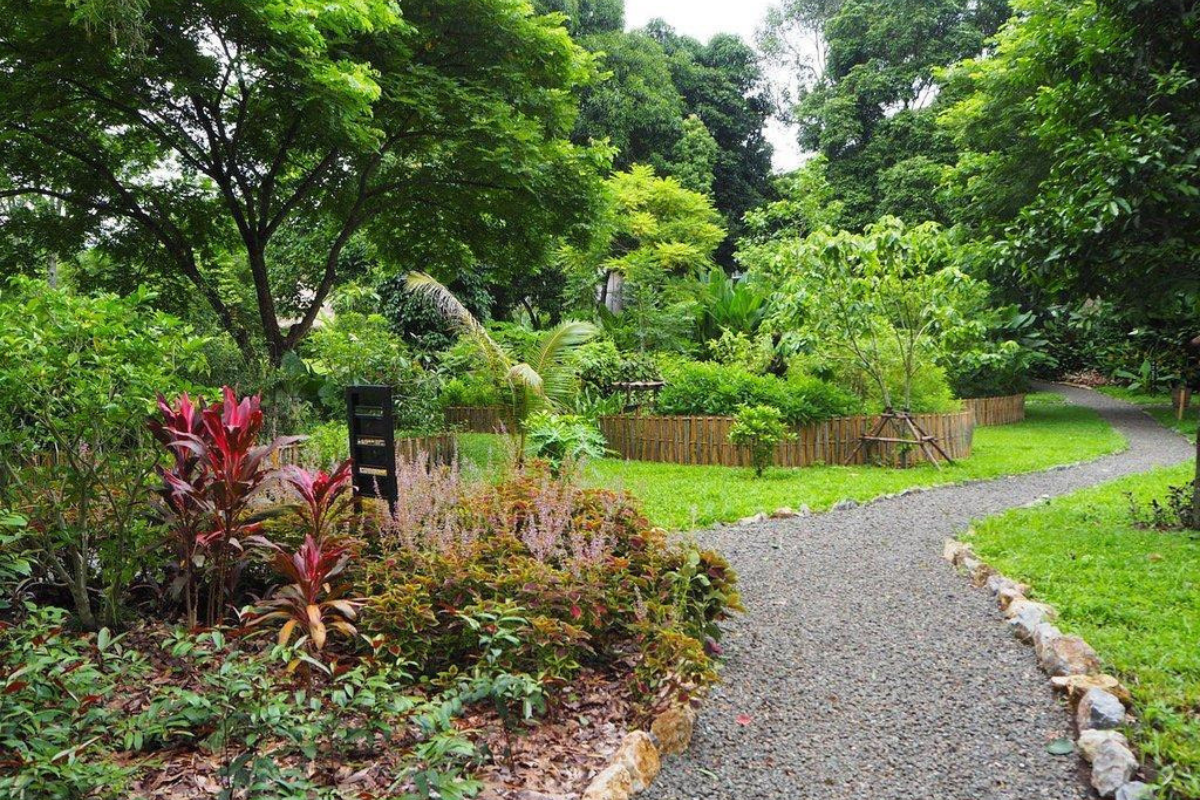
Currently closed with plans to reopen in late 2024, the Pha Tad Ke Botanical Garden offers a stunning display of native Lao plants and flowers. The garden’s mission is to educate visitors on the relationship between the Lao people and their natural surroundings.
Exhibits showcase plants traditionally used in medicine or for ceremonial purposes. The collections include hundreds of varieties of orchids, ferns, bamboos, and more. Several types of gardens and collections are available to visit on the grounds.
For additional eco-treks in Laos, the garden’s experts can direct you to reputable guides. To reach the botanical garden, take a boat from Luang Prabang. The boat returns to the city every hour until 5:30 pm, and the cost is included in your admission ticket.
Address: Ban Wat That, Luang Prabang 06000, Laos
